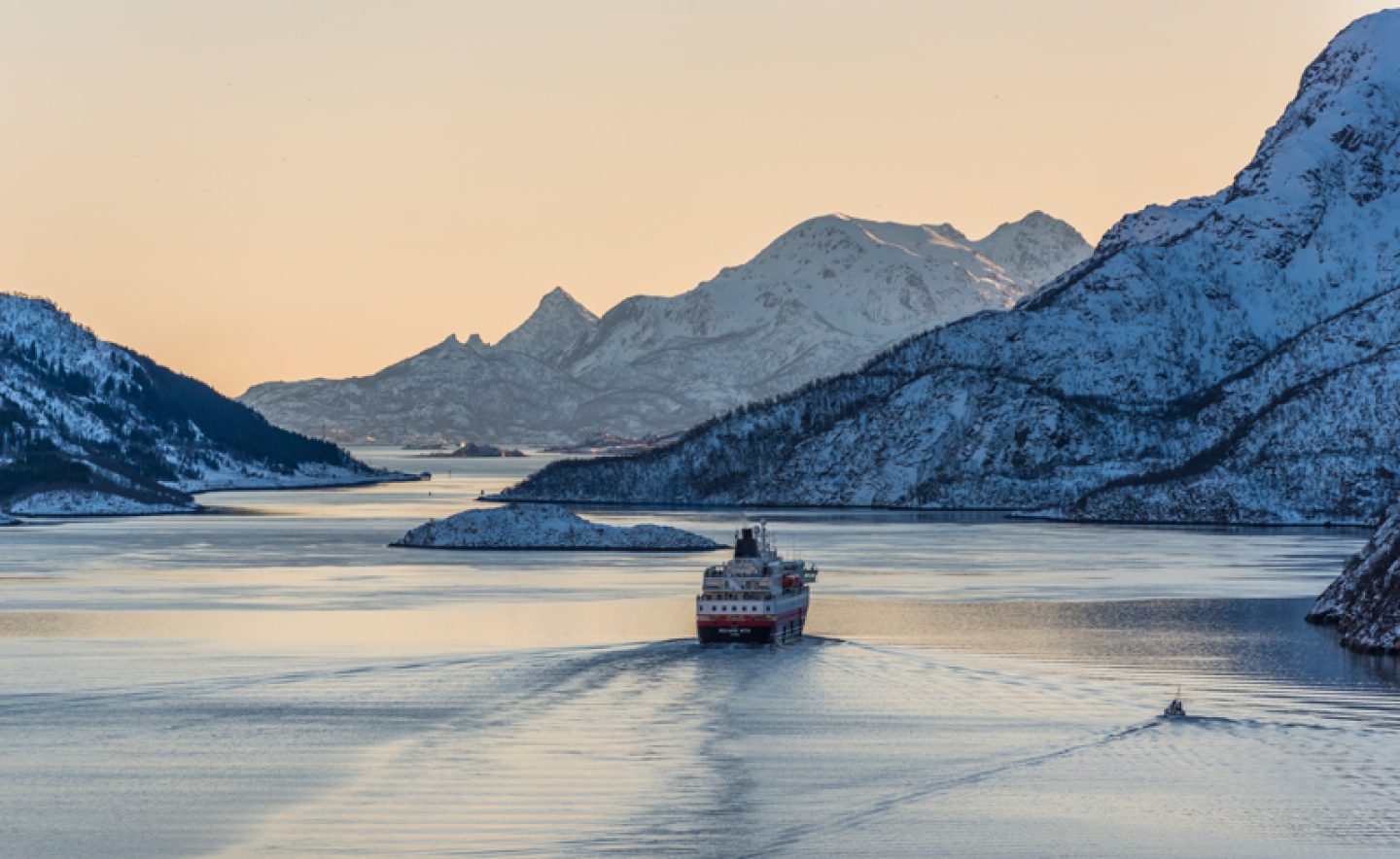
12 days, 34 ports of call, 2,500 nautical miles… the classic round trip on the Norwegian Coastal Voyage dates back to 1893. Discover its history and the latest ways you can experience all, or part, of this iconic route.
Gliding through narrow straits, slipping past islands and calling at remote ports and fishing villages, a voyage along the fjord-cleft coastline of Norway is a dream trip for many. The Kystruten – or Coastal Route – between Bergen in the south and Kirkenes, 400km north of the Arctic Circle, was first plied in 1893 when the steamer DS Vesteraalen set sail from Trondheim. For 130 years, vessels of all shapes and sizes have followed in her wake, ferrying goods to coastal communities and treating visitors to the spellbinding beauty of the Norwegian Fjords.
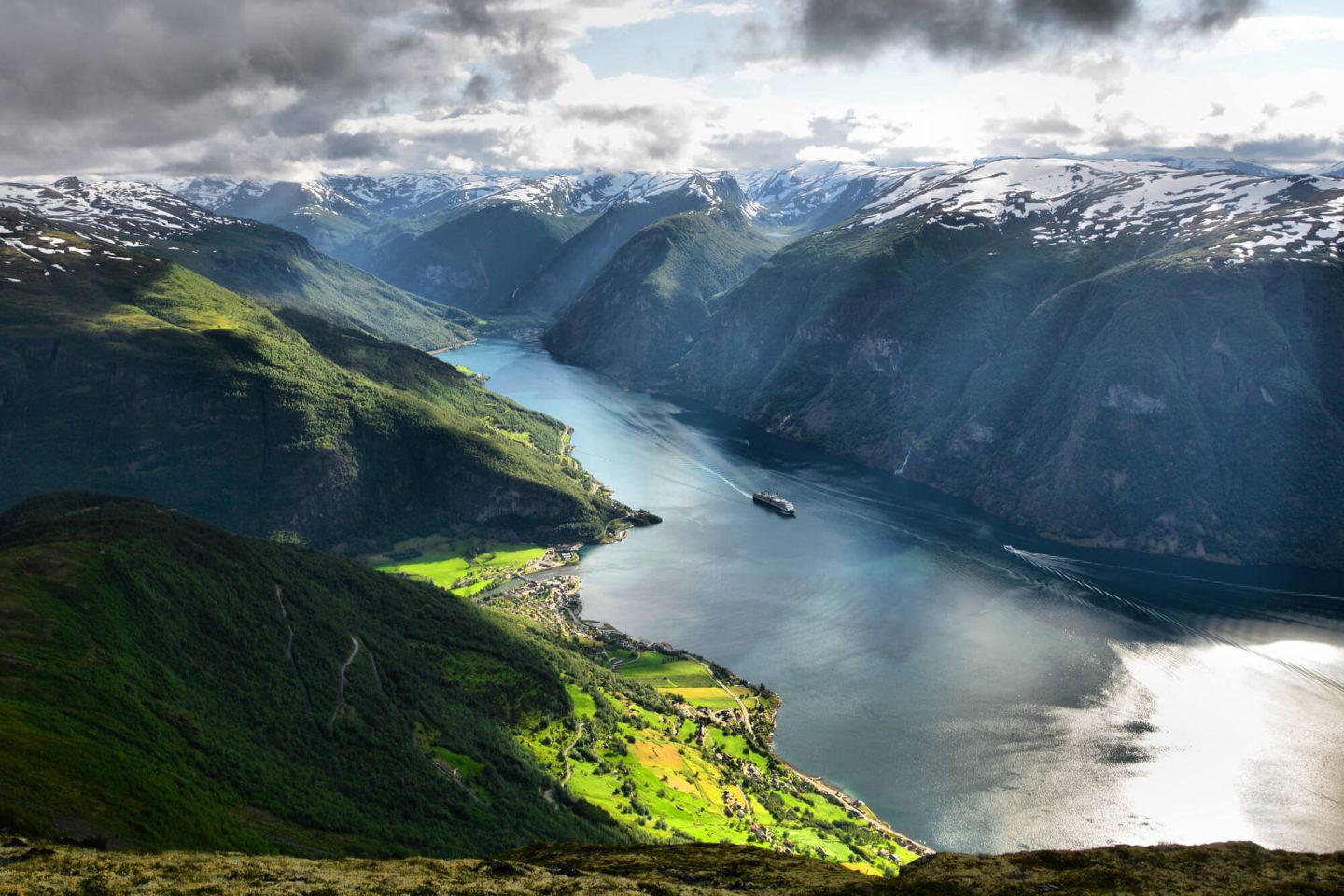
Early history of the Norwegian Coastal Route
The Kystruten was established in 1893 to connect communities along Norway’s convoluted coast. When captain Richard With gave orders for the DS Vesteraalen to slip her moorings in Trondheim on 2 July 1893 and make for Hammerfest, she entered poorly charted waters. Even so, the 50m-long steamship reached Hammerfest in a record time of 67 hours – 45 minutes ahead of schedule. It was the fastest any ship had sailed between southern and northern Norway, and the passage became known as Hurtigruten, or ‘Express Route’.
In 1898, the coastal route was extended south to include Bergen. Then, in 1908, Kirkenes, near the Russian border, became the northern terminus of the voyage. By the mid-1930s the Hurtigruten fleet had grown to 14 ships and, along with cargo and mail, was carrying over 230,000 passengers (a mixture of locals and tourists) each year.
We recommend: Hurtigruten Classic Round Cruise
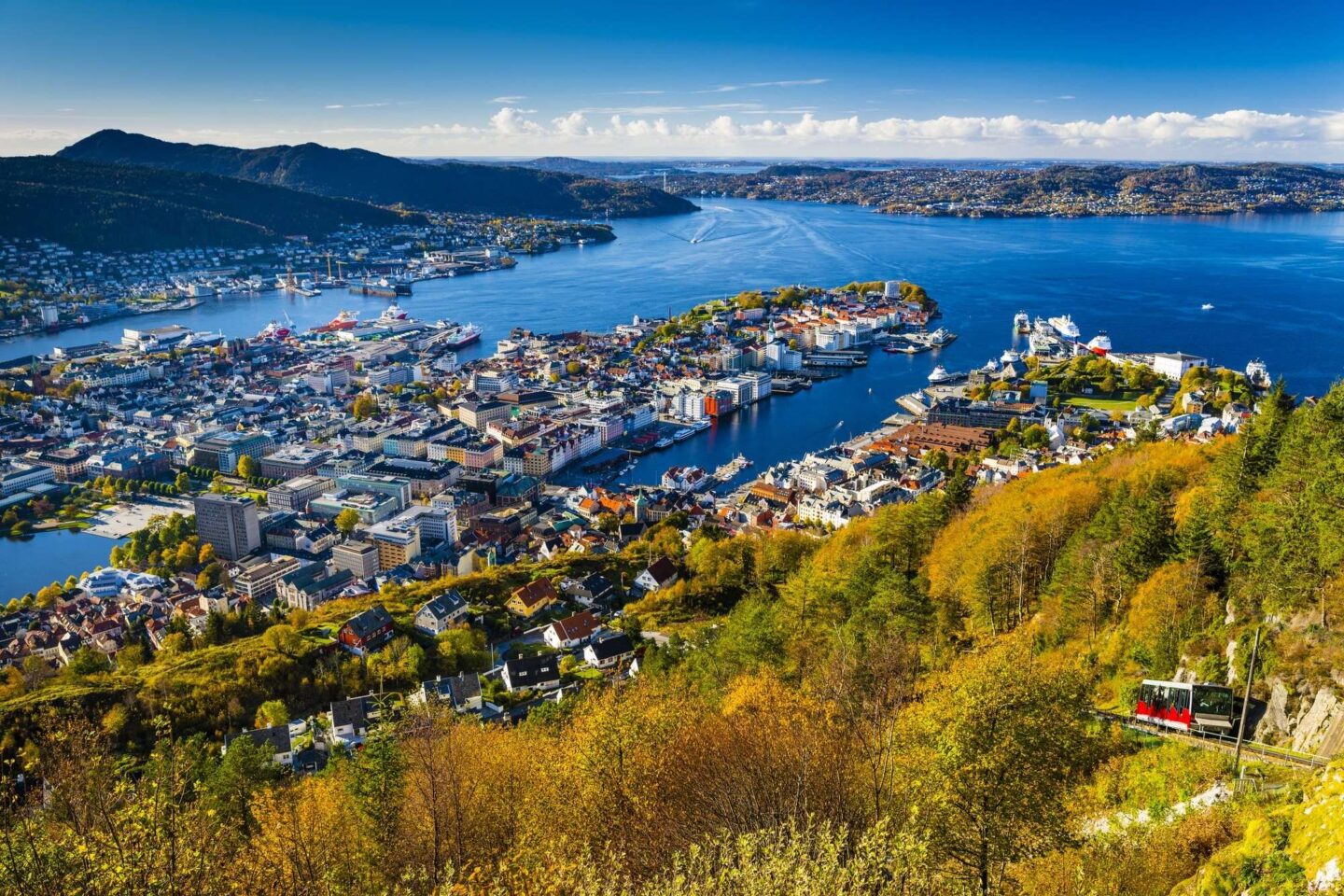
The impact of the Second World War
When Norway was occupied during the Second World War, much of the fleet was lost – and the DS Vesteraalen was no exception. She was torpedoed by a Soviet submarine in 1941 enroute from Tromso to Hammerfest and sunk with the loss of 37 passengers and 23 crew. Overall, 14 Hurtigruten ships and 700 lives were lost at sea from 1940-1945.
Following the Second World War, Hurtigruten bounced back. New ships were rapidly brought into service and by 1952 the distinctive red, black and white fleet was carrying over half a million passengers annually. In 1968, an offshoot of the Coastal Route began serving Longyearbyen in Svalbard, while in 2002, Hurtigruten vessels were deployed to Chile for Antarctic cruises.
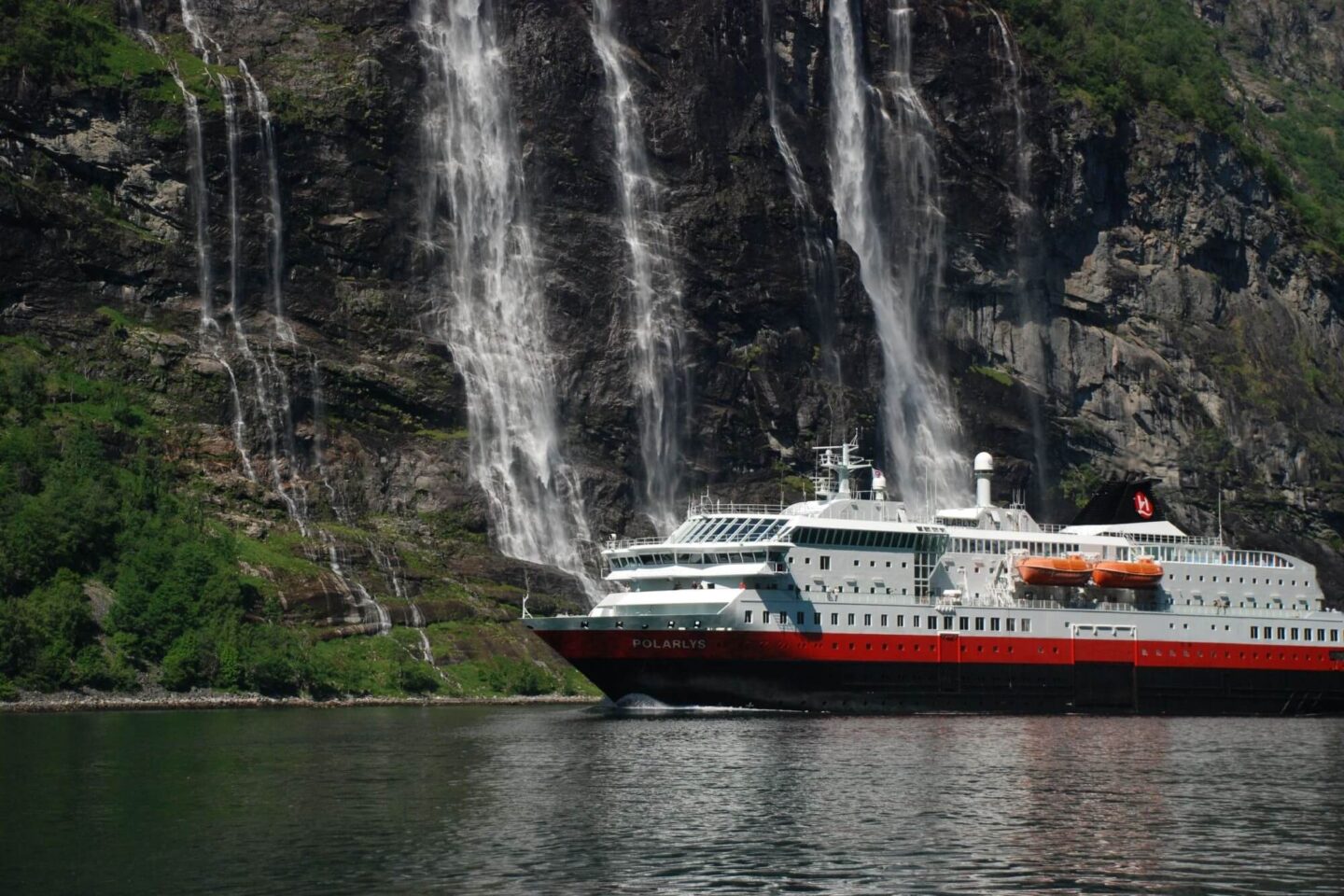
Sailing towards a greener future
The fleet stopped using toxic, heavy fuel oil in 2010, marking a significant shift towards a less polluting, more sustainable operation. Single-use plastics were banned in 2018, and an ambitious plan to upgrade some ships to hybrid power (cutting CO2 emissions by 25 percent) commenced in 2022.
In the same year, Havila Kystruten launched its new fleet of four sustainable, eco-friendly ships, becoming the second operator, alongside Hurtigruten, to sail the Norwegian Coastal Route. The two companies alternate departure days for the entire route from Bergen to Kirkenes.
Havila ships run on liquid natural gas, cutting CO2 emissions by 40%. Each vessel is also equipped with the largest battery packs ever installed on a passenger ship. Charged with clean hydropower ashore, they provide four hours sailing with zero emissions, in utter silence, allowing you to experience Norway’s breathtaking coastline with no fumes, no noise and minimal environmental impact. Each ship has a waste energy management system for harnessing ‘lost energy’ for heating, showers and hot tubs. Their hulls have been designed for energy-efficient sailing, and they are also ready to convert to hydrogen when it becomes a viable power for commercial voyages.
We recommed: Havila Norwegian Coastal Voyage
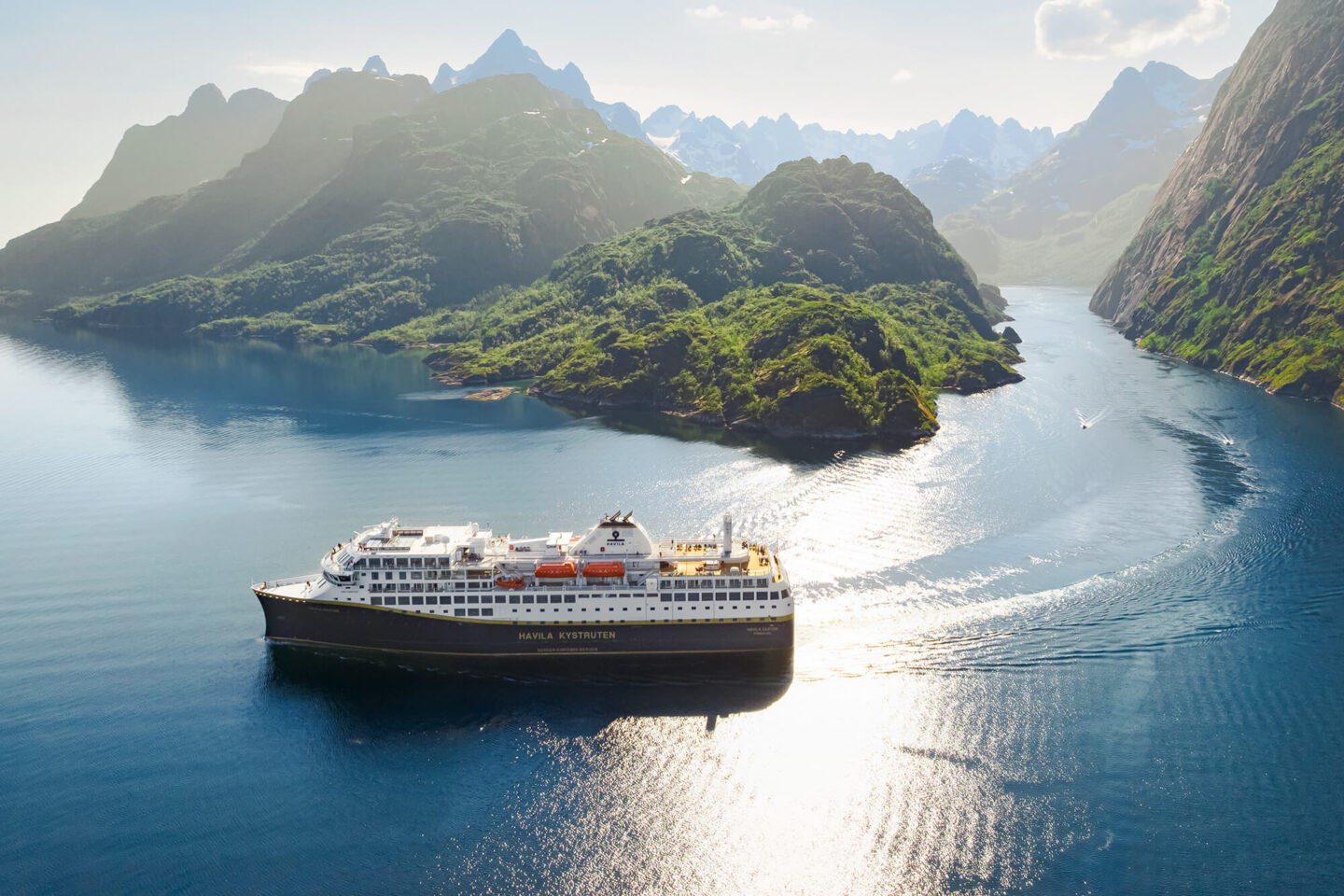
What is the classic round-trip voyage on the Norwegian Coastal Route?
The classic Norwegian Coastal Route takes you from Bergen in the south to Kirkenes in the north – and back again. A spectacular 11-night voyage, it connects 34 ports. Highlights include Bergen’s historic waterfront, the mesmerising peaks of Lofoten, and the legendary North Cape at the top of mainland Europe. You’ll also visit the ancient Viking capital of Trondheim, the beautiful city of Alesund (renowned for its Art Nouveau architecture) and the arctic town of Hammerfest – surrounded by the magnificent wilderness of Finnmark.
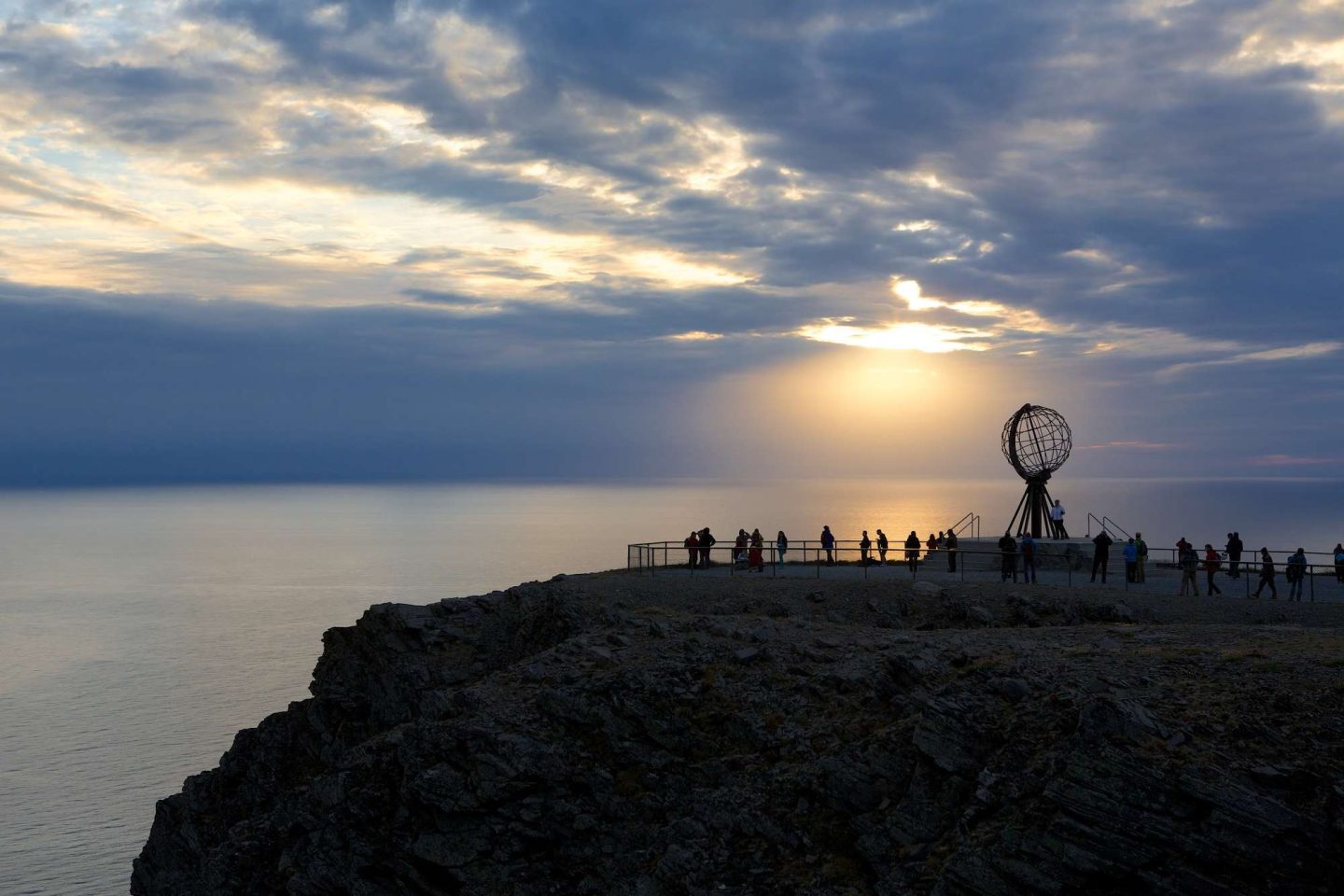
Can I sail one section of the Norwegian Coastal Route?
Yes, you can. We offer both northbound and southbound options. The northbound Bergen–Kirkenes voyage lasts six nights, while the southbound Kirkenes–Bergen route lasts five nights.
What’s included in a Norwegian Coastal Voyage?
Our Norwegian Coastal Voyage holidays include accommodation with private bathroom and all meals on board, as well as an English-speaking tour leader. We’ll also arrange flights, transfers and pre- and post-voyage accommodation for you. The food on Hurtigruten and Havila ships is excellent, with dishes prepared using mostly local and seasonal ingredients. Havila’s Hildring restaurants offer a five-course signature menu with Norwegian delicacies like king crab from Varanger and scallops from Hitra. We can arrange for you to extend your trip at the beginning and/or end of your voyage, or arrange shorter port-to-port itineraries.
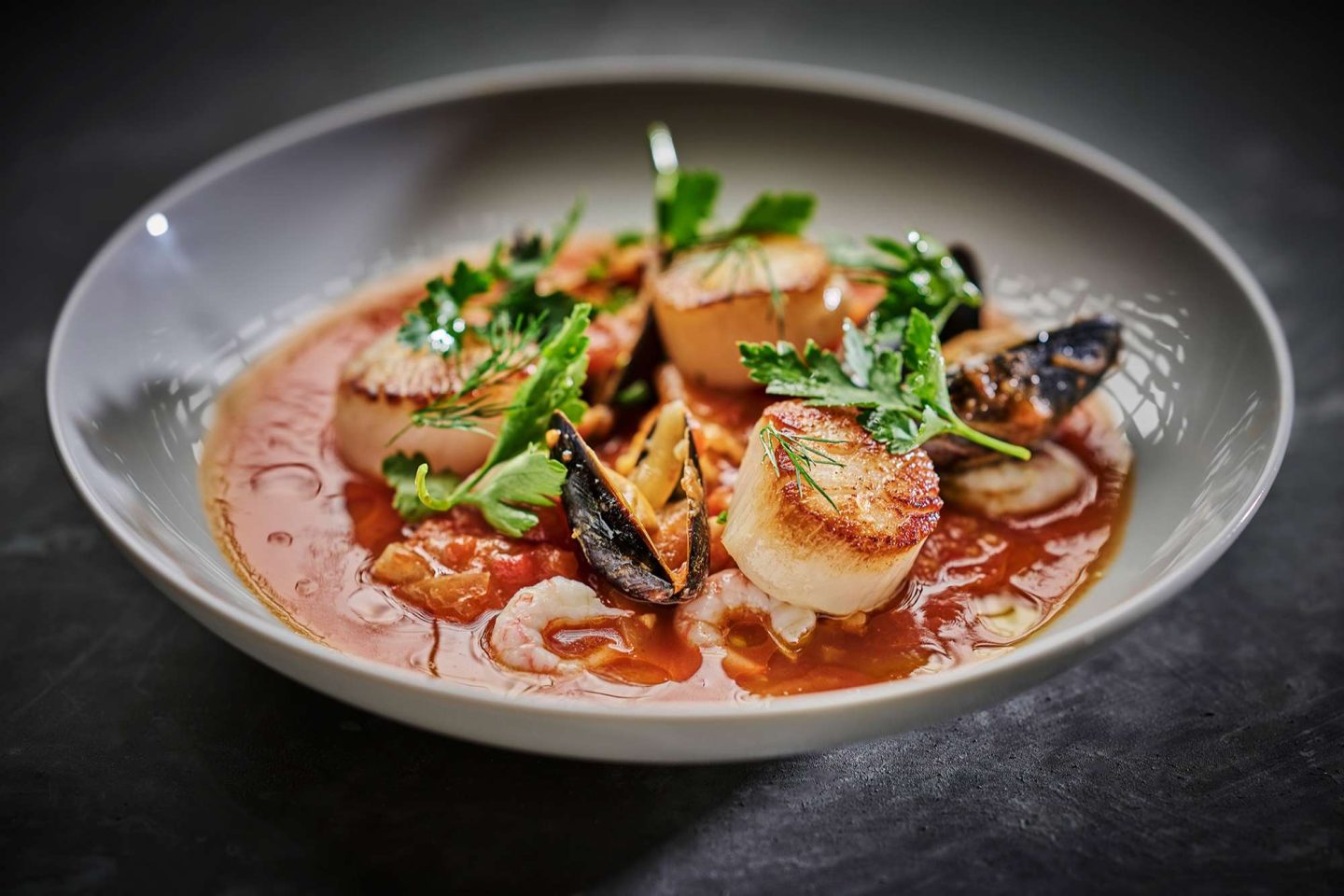
When is the best time to sail the Norwegian Coastal Route?
The Norwegian Coastal Route operates year-round. During summer, you can experience 24hr daylight and witness the midnight sun (peaking around mid-June). From around September to late March, the days are shorter, but the aurora borealis, or northern lights, can be seen on clear nights when conditions are favourable. During autumn you can still enjoy decent lengths of daylight with the chance of experiencing the aurora, while off-season months, like November, offer good value.
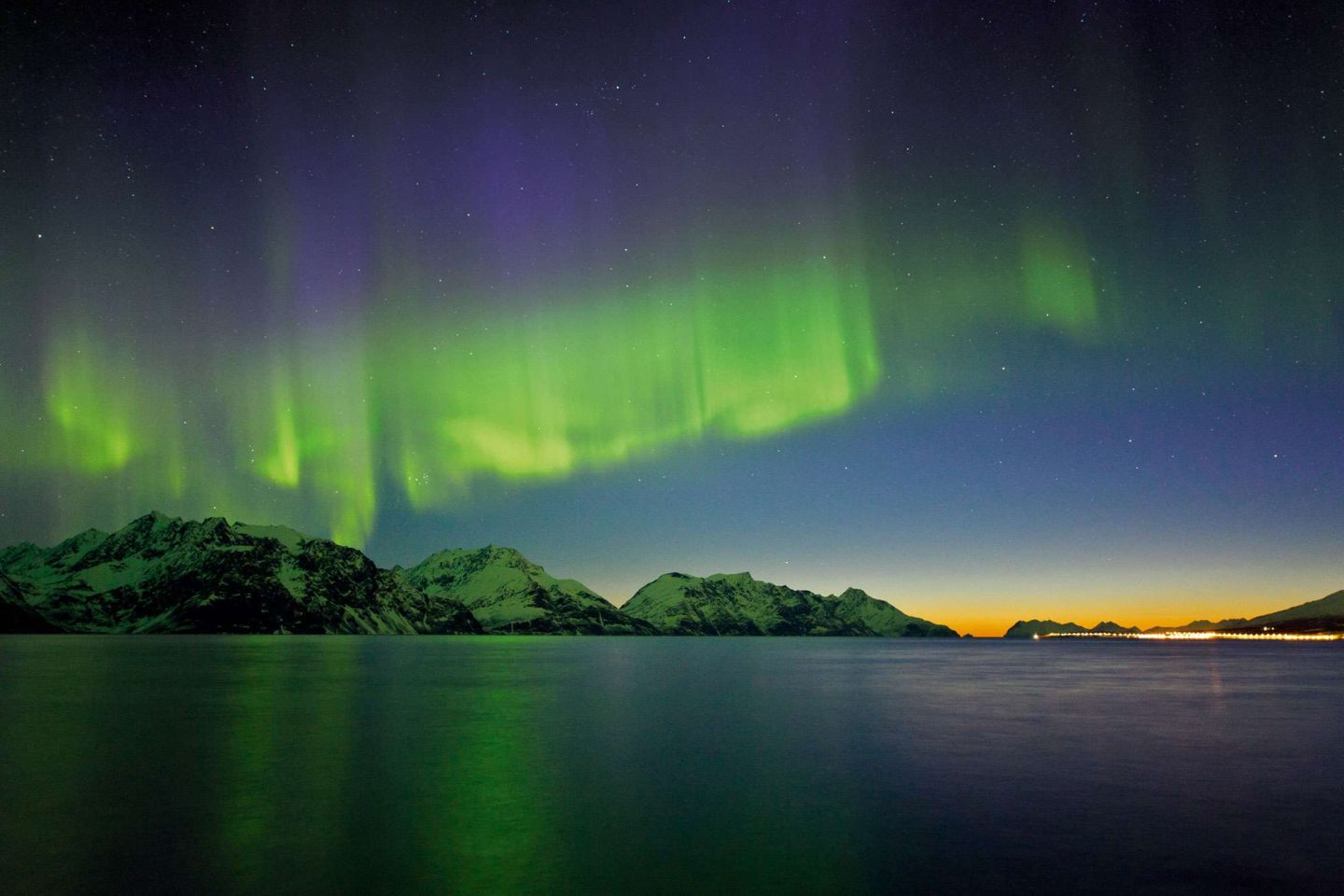
Feeling inspired?
If you have any questions about the Norwegian Coastal Route or want to start planning your voyage, call us on 01737 214 250, or you can send an enquiry to our Travel Specialists to start discussing your options.

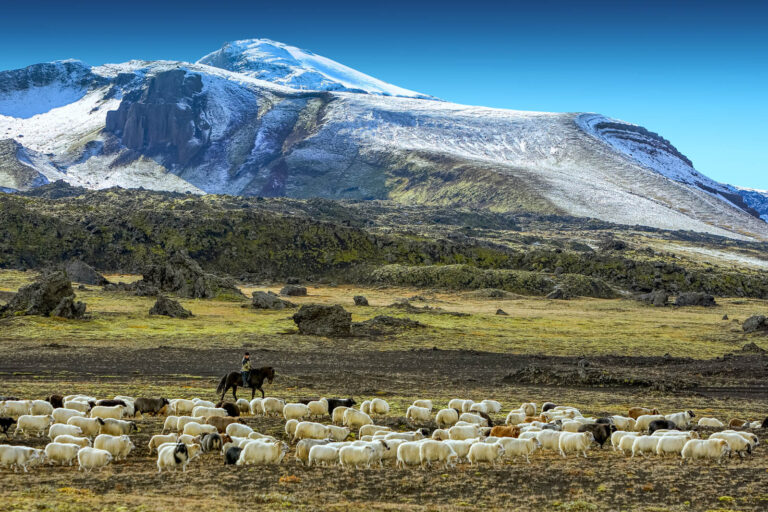
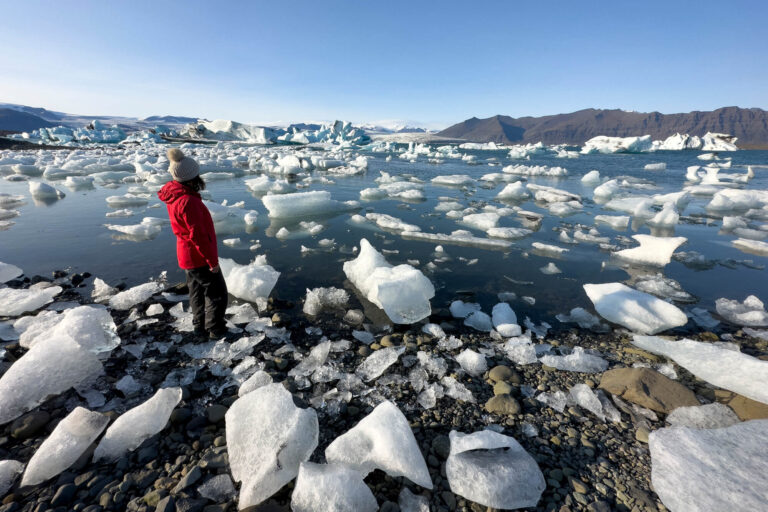



 Instagram
Instagram
 Facebook
Facebook
 YouTube
YouTube